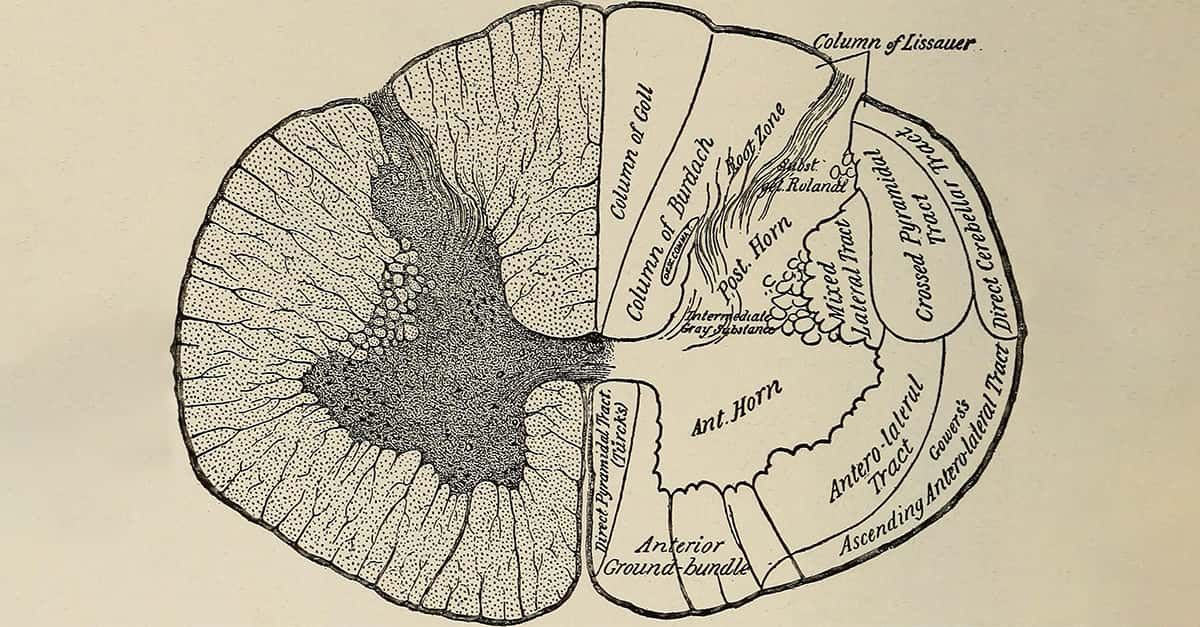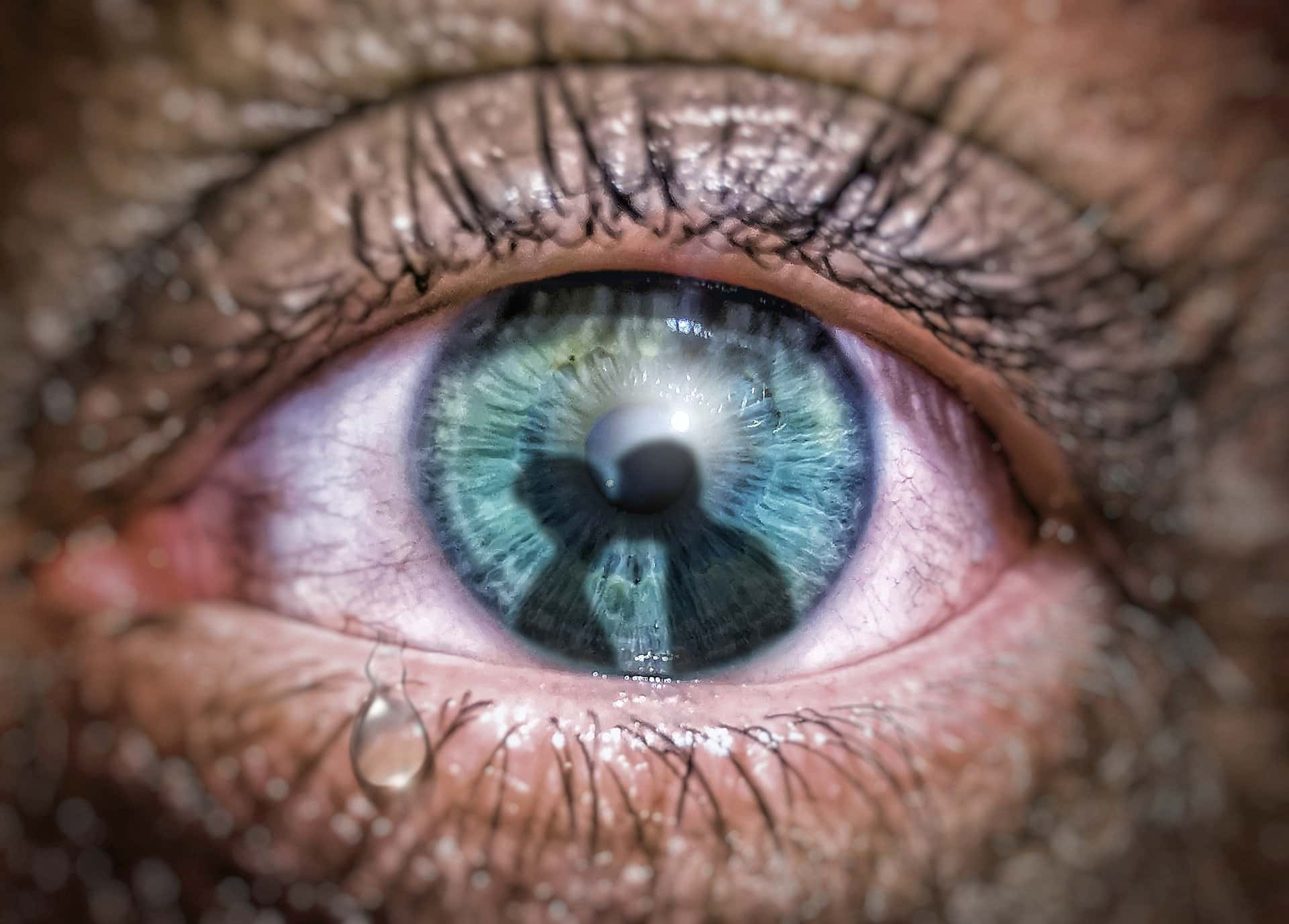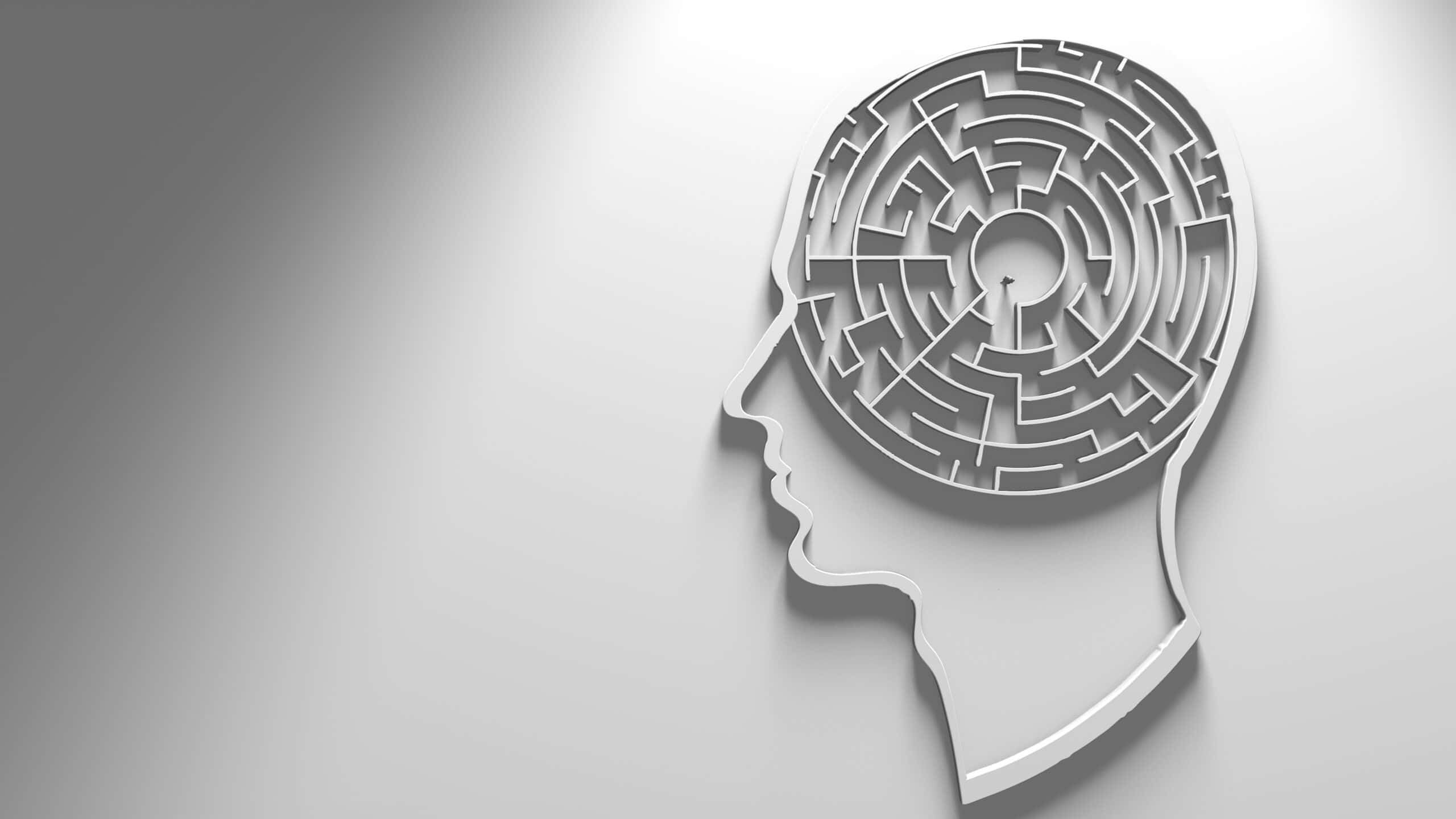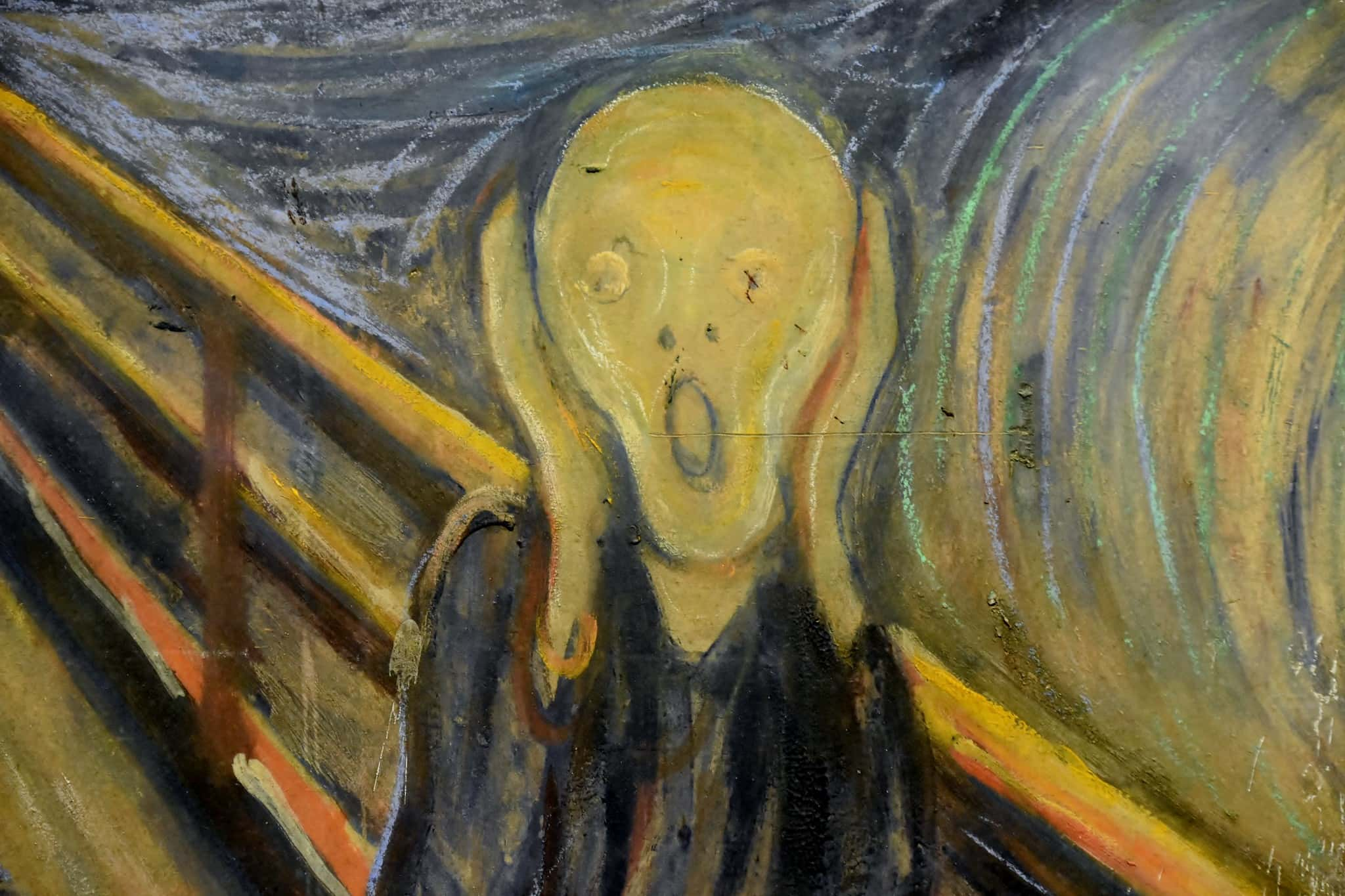Back in the day, people thought that "mental disorders" didn't exist. If someone seemed different from their peers, older civilizations and cultures often thought that the person was possessed by a demon or that they were being haunted for doing something horrible. Nowadays, we know better. The world of mental disorders is incredibly complex and interesting, as proven by these deranged facts.
Mental Disorders Facts
1. Just Playing
Thought about pretending to be insane to get out of something? It’s so crazy that it just might work—but not for the reasons you think. Pretending to have a mental disorder, is, in fact, a mental disorder. When a person acts as if they have an illness by deliberately feigning or exaggerating symptoms it’s actually called a “factitious disorder.”
2. The Big Five
Five of the most major mental disorders are actually found to overlap, and may even share a common genetic root. The disorders? Autism, ADHD, bipolar disorder, major depression, schizophrenia.
3. The Upside
In 2012, the Journal of Psychiatric Research released a study that found that creative professionals are 8 percent more likely to be bipolar then the general population.
4. Creative or Crazy?
Another study in Iceland suggested the link between mental illness and creativity was even stronger. Dr. Kári Stefánsson studied genetic data from 80,000 people looking for genetic variants that increase the risk of bipolar disorder or schizophrenia – and found that in the 1000 creative people they studied, the creative folks were 17% more likely to carry the variants for mental illnesses.
5. Insult to Injury
Many people know that the famous composer Ludwig van Beethoven was deaf, but recent theories suggest that he may have been bipolar as well. His fits of mania were well known amongst his friends, and when on an upswing he could compose numerous works at a time. When he was in his down periods he made some of him most celebrated works.
 Flickr, Royal Opera House Covent Garden
Flickr, Royal Opera House Covent Garden
6. Strange Composition
Some historians now believe that Beethoven wasn't the only great musician with a mental disorder. Mozart likely suffered from Tourette’s syndrome, a mental illness that causes its sufferers to burst out uncontrollably with twitches and swearing. Evidence of Mozart’s outbursts can even be found in some of his writings, in which he makes unexpected references to “feces” and “buttocks.”
7. All Work and No Play
According to other researchers, another kind of artist is particularly vulnerable to mental illness: Not musicians, but writers. They’re about 120 percent more likely to have bipolar disorder. Writers are also more likely to abuse substances like drugs or alcohol.
8. I’m the Fire Starter
Pyromaniacs are attracted to fire and may feel all sorts of emotions before setting a fire – like tense or aggressive. They don’t set the fires for a purpose, like for insurance money or to destroy property. Instead they just are drawn to the flame. They may even hang out at fire stations or become firefighters so they can make fire a full time job.
9. Twisted Fire Starter
Pyromaniacs tend to be both drinkers and men. The most infamous arsonist, Paul Keller, was an alcoholic who set more than 70 fires beginning when he was a child. He even tried to join the Fire Department. He is now serving a life sentence.

History's most fascinating stories and darkest secrets, delivered to your inbox daily.
10. Or Something Else?
Some experts feel that the label pyromaniac is a myth, rather than distinct mental illness. They say that it romanticizes a particular group of mentally ill people who just happen to like to set fires.
11. Coffee Makes Me Crazy
According to the DSM too much caffeine, alongside withdrawal from your daily cup of joe, is a classified as a mental disorder.
12. Just Herbal Tea Please
Caffeine Intoxication occurs when one ingests over 250 milligrams of caffeine. Surprisingly, that's only about two cups of coffee. It can cause panic and anxiety disorders.
13. Stop Picking!
To bite the inside of your cheeks or the skin around your nails is not just an annoying habit, but a mental illness called dermatophagia. It’s an impulse control disorder linked to obsession and anxiety.
14. Hair Raising
Beginning at about age 12, or puberty, trichotillomania is the compulsion to pluck one’s hair out.
15. Talk About a Hair Ball
In some extreme cases, trichotillomaniacs chew and swallow the hair the pull out, causing hairballs to accumulate in the intestinal tract. Curious? Visit the the National Museum of Health and Medicine in Washington, D.C. That’s where you can see a huge hairball molded to the shape of a girl's stomach. It took six years to form.
16. Demons!
Many cultures believe that demons possess people—but in the last ten years, researchers have discovered that there may be a rational basis for these supernatural beliefs. A form of autoimmune encephalitis has been discovered to mimic the symptoms of demonic possession. It largely affects young women and can come on with no warning whatsoever.
17. You’re in My Blind Spot
Hemineglect is a neurological disorder that is the result of brain injury. Sufferers simply can’t notice or care for things on one side. They will only eat from one side of their plates, write on one side of a page, or even shave one side of their face.
18. The Green Eyed Mental Illness
Othello syndrome is when someone suffers from delusional jealousy. Named for the Shakespeare play of the same name, the disorder gives someone a conviction that their partner is cheating on them. Sufferers can threaten, attack or even stalk the imagined lovers of their partners. In one case, a woman accused her husband of cheating on her—and fathering 10,000 children with his 70-year-old mistress.
19. It Takes Two
Folie a deux is a shared psychosis or delusion between two or more people who are known to each other. In these cases, one person tends to have a genuine mental illness, often schizophrenia, while their otherwise mentally fine friends and family take on their neuroses. It's like a two for one deal, but not the kind you want to get.
20. All My Friends Are Dead
All psychological disorders are uncommon, but this one is particularly depressing. There is a strange syndrome where you believe that everyone you know is dead. The upside? You think you’re dead also. Called "Cotard’s Delusions," the people who suffer from this disorder tend to stop eating and claim that they are in heaven or hell.
21. How Many In There?
Multiple personalities is a misnomer. People with Dissociative Identity Disorder actually have different self-states. Instead of discrete identities, these are only extreme versions of “different ways of being themselves.”
22. The Mad Hatter
A common illness struck when hats were the fashion of the day: Mad Hatters Disease. Because hat making utilized mercury, hat makers suffered from paranoia, tremors and delusions. France banned the use of mercury in hat making in 1898. The practice continued in the US until 1941, despite 80% of hat makers showing signs of poisoning. The only reason it stopped? Because of World War II, the country needed the mercury for more important things than fashion accessories.
23. No Fear
There’s an entire group of people who have a brain disorder that makes them unable to feel fear. When the amygdala is damaged – such as from trauma or Urbach–Wiethe disease – people simply don’t get a fear response. While this itself is not a hazard, it does mean that people get into dangerous situations unable to feel with threat that may be posed to them.
24. No Morals?
According to MRIs and autopsies, the outer layer of the amygdala is much smaller and thinner in psychopaths than in the normal population. This means that, rather than being unable to feel fear, they are unable to recognize it in others.
25. Riding High
Apparently, this discovery about psychopathic amygdalas has far-reaching consequences. According to Joshua Buckholtz of the Vanderbilt University in Nashville, the thin amygdala also means that a psychopath produces more dopamine than the average person. And, not only does it produce more, it makes them overvalue it. Buckholtz believes that this is why psychopaths are obsessed with getting their own way.
26. Psycho Executive Officer
According to a list compiled by Oxford researcher Kevin Dutton in 2013, certain professions attract more psychopaths than other jobs. Groups of surgeons, police officers, and lawyers all have higher than average rates of “psychos.” But here's something to think about: The number one vocation chosen by psychopaths was “CEO.” Yikes.
27. Don’t Love Those Odds
This confirms another study done in 2010. A researcher gave up-and-coming executives a questionnaire based on the psychopath checklist. A shocking 1 in 25 were full blown psychos. That’s more than four times the average population!
28. Bad for Business
This is bad news for businesses—but not for the reason you’re thinking. It’s because psychopaths tend to be terrible leaders due to their lack of empathy. If that’s the case, how do they climb so high on the corporate ladder? It’s simple: They’re just that charming.
29. There Out There
According to one study, three out of 11 personality disorders were less common in criminals than in CEOs. Makes you think!
30. Smell Ya Later
Psychopaths have reduced activity on the orbital corticies, which means they have trouble with impulse control and planning. But they also have difficulty detecting smells. According to one smell test, psychopaths had trouble identifying what they were smelling. It even turns out that the worse they were at identifying various aromas, the higher they scored on a standard psychopath test.
31. Say Ahhh!
Some people think that schizophrenia may be able to be diagnosed in a strange new way: By looking in a patient’s mouth. A wider palate on the roof of the mouth is associated with schizophrenia, which not only changes how it could be diagnosed, but also means that the illness could be a larger developmental disorder with mental and physical symptoms.
32. Try to Relax
Long-term stress is horrible. It causes a chronic release of cortisol which has terrible side effects. Not only can it impair brain function, it can also destroy brain cells. It can even make the brain smaller through cellular atrophy. Some researchers think that dementia and Alzheimers in the elderly may be a result of this self “poisoning” from atrophy.
33. Tall Tales
Korsakoff’s syndrome is a disorder caused serious deficiency in thiamine, or vitamin B1. The deficiency causes confusion, slowness of speech, and forgetfulness. But most interestingly, as it progresses so does a peculiar symptom. People with Korsakoff’s will make up bizarre stories and lies for no reason. But these flights of fancy are not lies, the people actually believe the tall tales they’re telling.
34. Small Heads
Autism also has a correlation to physical factors. Some studies indicate that children with autism tend to be born with slightly smaller heads. However, the heads and brains grow so quickly that for a while they are larger than average. Later, it evens out so that autistic adults have a typical brain to body ratio.
35. N’yawn
You know how yawning is contagious? Well, it’s not for children with autism. A Japanese study said that autistic children miss the facial cues that would trigger someone to start yawning after they see someone else yawn.
36. A Great Autist
According to recent theories, the classic artist Michelangelo may have been autistic. He had a single-minded routine and difficulty forming relationships, with few friends. All of this plus his obvious genius in math and art means some think he may have been on the spectrum.
37. Cry For Help
Michelangelo isn’t the only artist potentially affected by a mental disorder. The Norwegian painter Edvard Much is another great artist with mental troubles. Not only that, his most famous painting was actually the result of a panic attack the artist suffered in Oslo in January 1982. The experience led him to make multiple copies of his famed work “The Scream.”
38. Painting a Sad Picture
The Dutch painter Vincent Van Gogh was an eccentric and strange person, but the situation was far more complicated than just an odd personality. He almost certainly suffered from some form of mental illness, though to this day, no one is quite sure exactly what plagued him. From epilepsy and self-injury disorder to bipolar disorder, borderline personality disorder, and anxiety, historians have lots of ideas about what might have caused Van Gogh's perplexing behavior.
39. A Serious Case
Nikola Tesla was one of the greatest inventors and scientists in history, and he remains admired by countless people all over the world to this day. Nevertheless, Tesla was known to have many quirks, including, ahem, the fact that he fell in love with a pigeon "as a man loves a woman" (his words!). Many people now believe that he suffered from a serious case of Obsessive-Compulsive Disorder (OCD).
 Wikimedia Commons, Ivan Veličković
Wikimedia Commons, Ivan Veličković
40. You Are What You Touch
Tesla’s OCD caused him to be extremely picky about touching or being around certain objects. For example, he hated jewelry, refused to touch hair, and despised anything that was round-shaped. He was also very concerned about germs and cleanliness, refusing to shake hands with others and often cleaning his kitchen utensils with up to 18 napkins before using them.
41. The Origin of the Book
In the 19th century, Charles Darwin famously changed our ideas about evolution. But as well known as his theories have become, many people are surprised to learn about the biologist's surprising struggles with mental illness. Darwin’s agoraphobia (anxiety and fear of putting oneself in situations where one would feel trapped, embarrassed, or helpless) led him to adopt a reclusive lifestyle upon his return home from his famous voyage, rarely leaving his house from the age of 30 onwards. His anxiety was so severe that he even avoided speaking to his own children.
42. The Black Dog
You’d be hard-pressed to think of a more accomplished world leader than Winston Churchill. But when he wasn’t protecting Britain from the horrors of fascism, he was struggling with what he himself referred to as “the black dog of depression.” It had plagued Churchill since at least his 30s.
 Wikimedia Commons, Yousuf Karsh
Wikimedia Commons, Yousuf Karsh
43. Rendering unto Caesar the Things that Are Caesar’s
Although we know a lot more about the historical figures of recent centuries than we do about ones from the distant past, they were certainly not the first ones to suffer from mental health struggles. Even the famous ancient Roman emperor Julius Caesar is believed by many experts to have likely suffered from either epilepsy or a combination of small strokes and vertigo.
44. An Honest Look at Honest Abe
There is no president in American history more famous than Abraham Lincoln, the man who freed the slaves and saved the union. Nevertheless, many people are surprised to discover that Honest Abe wasn't immune from struggles. He suffered from clinical depression for the majority of his adult life.
45. Fifty/Fifty
According to the CDC 50% of adults will develop at least one form of mental illness in their lifetime.
46. Not Such a Vegetable
After an experiment with an MRI showed that one patient in a coma could communicate, doctors now think that it’s possible that one in five vegetative patients can communicate with their doctors. This breakthrough may change treatments and care, allowing them to discuss their prognosis and help entertain them even while they’re comatose.
47. Have the Fish
Feeling bad? Have some fish. Low fish intake has been correlated with depression.
48. A Stroke of Luck
“Sudden Artistic Output,” is a rare disorder that results in a creative drive caused by a brain injury. It’s only happened three times, once to a chiropractor who quit his job after a stroke to become a successful artist.
49. Quack Medicine
Trephination or trepanation was one of the earliest and most gruesome forms of mental health treatment. It was a fairly common practice whereby a small part of the skull was removed using an auger, bore, or saw. This process dates back at least as far as 7,000 years, and was done by cultures all over the world. Though we can't be sure why every single group practiced trepanning, it was frequently done to cure "madness" by releasing the evil spirits that were possessing the afflicted person.
50. The Most Terrifying Cure of All
Lobotomies were a widely accepted treatment for mental illnesses in the ‘40s and ‘50s. It consisted of surgically cutting or removing the connections between the prefrontal cortex and frontal lobes of the brain. It was designed to disrupt the circuits of the brain and was completed in five minutes. The lobotomy treatment won António Egas Moniz the Nobel Prize in Physiology and Medicine in 1949 and was used until the mid-1950s, when the first psychiatric medicines were introduced and the severe side-effects of lobotomies became too blatant to ignore any longer.


























































